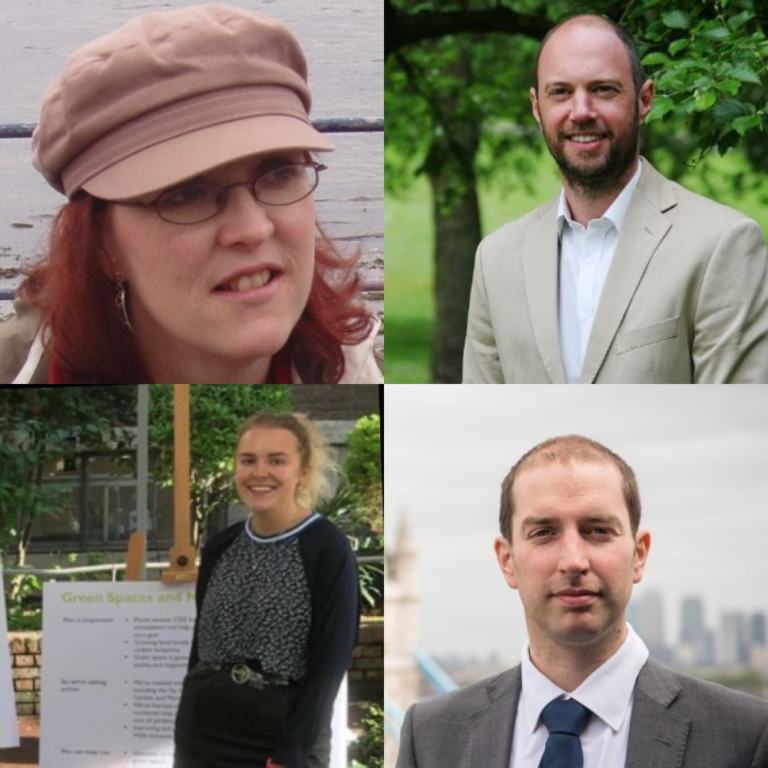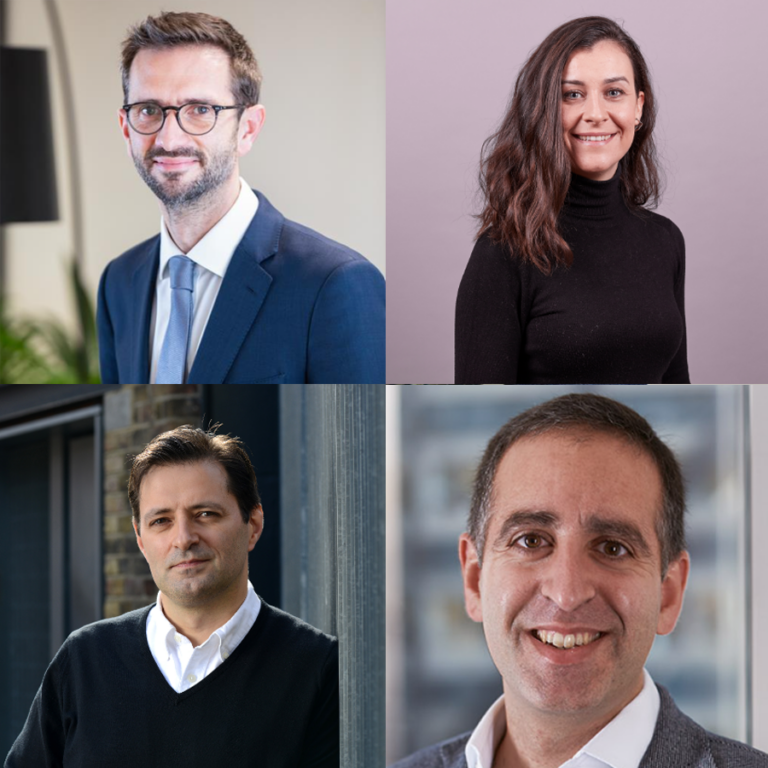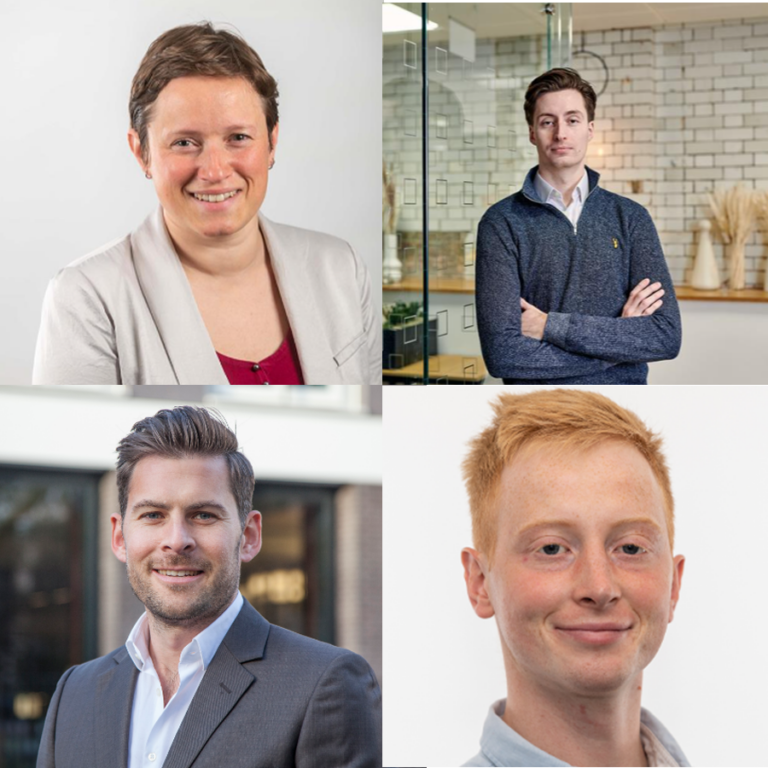Innovative Start-Up Forum: What did we learn from the Consultants?

Innovation is a buzzword that has been around for a long time, but how do organisations successfully procure and implement innovative solutions?
At our latest Innovative Start-Up Forum, UKGBC convened industry experts from its multidisciplinary consultancy membership to share their insights on how they identify, evaluate, and implement new solutions. We welcomed:
- Johnathan Munkley, Technical Director – Digital Services Lead, WSP
- Sarah Griffiths, Senior Sustainability Consultant – Circular Economy, Mott MacDonald
- Emily Walport, Senior Engineer – Materials Consulting, Arup
- Olivia Hough, Associate Sustainable Materials Lead, Atkins
Jade Cohen, CPO and Co-founder at Qflow, and a member of the UKGBC Innovative Start-Up Forum’s Advisory Group, reflects on some of the key discussion points.
Finding Innovative Start-ups
Organisations look for innovative start-ups and solutions through various channels. The industry experts identified several methods, including personal and professional networks, attending events, using industry publications, and working with research institutes. Emily described a range of ways in which Arup identify innovations, from pro-actively searching for new solutions, collaborating alongside research institutes and start-ups in the development of new technologies, to reading about ideas in industry forums like the Institute of Materials, Minerals and Mining’s “Materials World”. Additionally, they reflected on social media and sustainability awards as key methods for identifying start-ups.
‘Crucially, the panellist kept referring to the importance of personal relationships and networking for not only finding solutions, but also the likelihood of their organisations using their products or services in the long term.
One of the biggest challenges in procuring innovative solutions is navigating the contradiction between wanting to try something new and the need for a solution to be tried and tested.
Overcoming Challenges
One of the biggest challenges in procuring innovative solutions is navigating the contradiction between wanting to try something new and the need for a solution to be tried and tested. Sarah suggests trialling innovations in their venture arm to take some of the risk out of the equation. Emily emphasises the importance of early communication and collaboration between start-ups and organisations to identify lower-hanging-fruit solutions that can build confidence and lead to successful scaling.
Johnathan stresses the importance of start-ups understanding the business problems that organisations are trying to solve. He suggests building a business case from a strategically imperative problem and then finding technology to solve it. Olivia cautions that architects can get excited about new products that may not be practical to implement, and therefore, it’s essential to be responsive when engaging with start-ups and to ensure that everyone has a clear understanding of what is possible.
The experts also mentioned other challenges, such as the lack of case studies and return on investment data, the need for data such as EPDs (Environmental Product Declarations) and questionnaires to implement new solutions. Whilst there may be no ‘silver bullet’ for overcoming these challenges, early communication with the right stakeholders was a common pathway highlighted to ease these burdens, alongside a clear narrative about value-add of the products/services being offered.
Examples of good practice
Despite considering the challenges, it was clear the consultants were excited about working with start-ups and could share examples of successful collaboration. Emily talked about the “People’s Pavilion” in Amsterdam where products were returned to manufacturers after deconstruction to explore circular design. Sarah discussed Mott MacDonald’s partnership with Holcim, that connects with start-ups and brings products to market (for example Lower Carbon Materials). Jonathan commented on the effectiveness of start-ups understanding the business problem they are trying to solve, and guiding an organisation to the right type of solutions. In general, it was felt that sustainable material databases are being used widely (for example Firstplanit and 2050 Materials) and for start-ups, being responsive when engaging with companies is important.
Opportunities for Improvement
To improve the collaboration between the start-ups and consultancy firms it was agreed the following steps should be taken:
- Larger organisations often need materials data to implement something, so if start-ups put in effort to properly complete these questionnaires that is viewed on favourably.
- Solution providers should share case studies with demonstrable return on investment, or outline how they will produce these over time if they don’t already exist.
- Clear and open communication is crucial and all parties need to be aware of the potential limitations of any new product or service. This doesn’t mean something is a non-starter, but an honest approach on this will ensure expectations are set in the right way.
The Next Big Challenge
Finally, when asked about the next big challenge in their respective fields, the panel had different but complementary responses. Sarah’s felt the move to the circular economy will be vital, and Olivia and Emily both mentioned the need to put more effort into material reuse. Johnathan highlighted the challenges of dealing with the Building Safety Bill and the growing issue of greenwashing in ‘vanity projects’. Emily warned of the risk of “burden shifting” if we don’t take a holistic approach to our materials selection and design and simply focus on single impact measures for example carbon or waste.
In conclusion, procuring innovative solutions is a complex process that requires clear communication, collaboration, and a willingness to experiment. Larger organisations should also open and responsive when engaging with start-ups and ensure everyone has a clear understanding of what is possible, and start-ups can help themselves by understanding the challenges organisations are trying to solve.
Related
Innovative Start Up Forum – What did we learn from the Local Authority Officers?

UKGBC Innovative Start-Up Forum – What Did We Learn from the Architects?

UKGBC Innovative Start-Up Forum – What Did We Learn from the Developers?

Trends in sustainable solutions for the built environment

